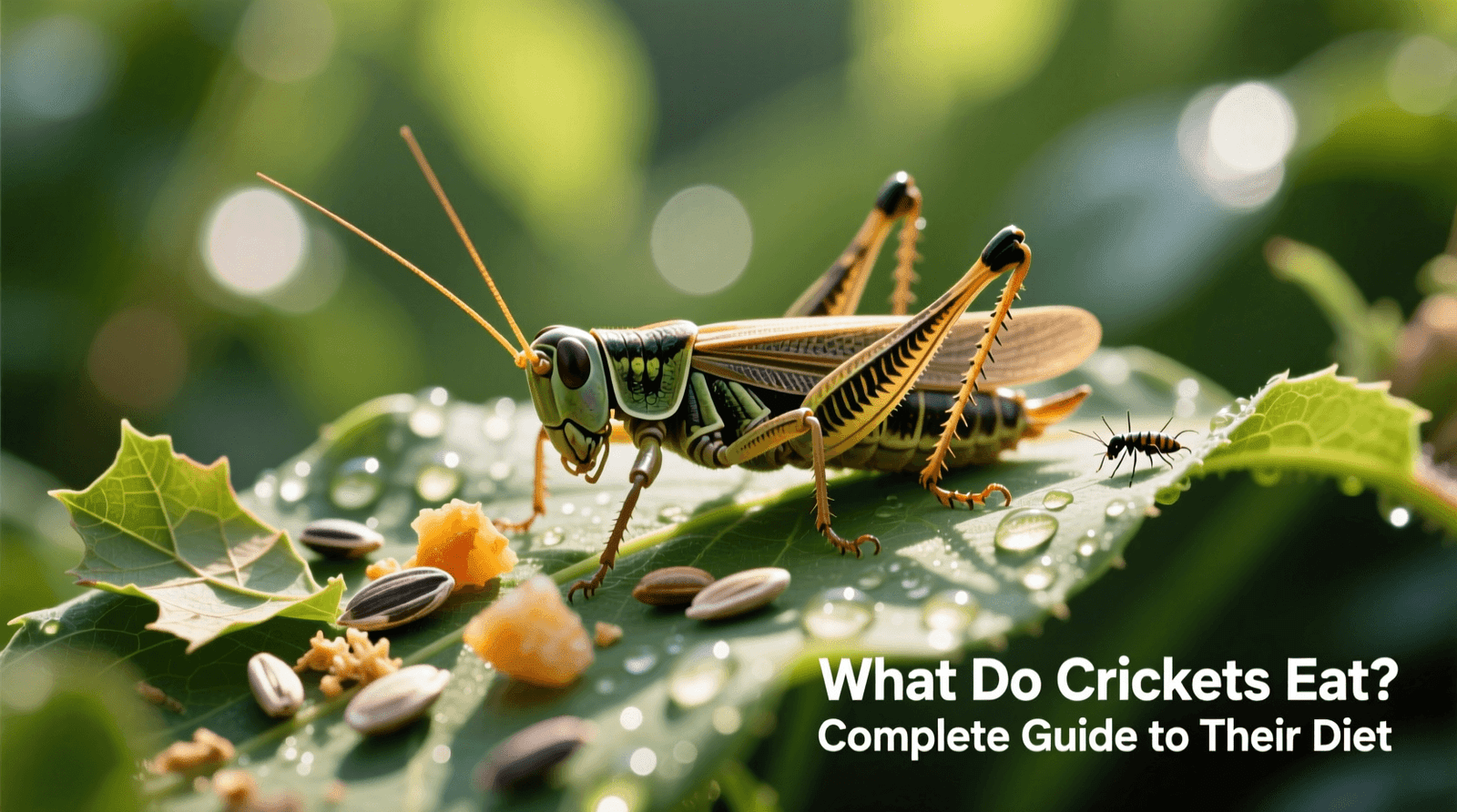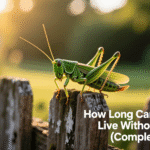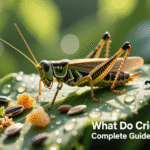If you’ve ever heard crickets chirping at night and wondered what keeps them so lively, you’re not alone. Crickets are some of nature’s most fascinating omnivorous scavengers. They’ll eat plants, fruits, and even smaller insects to survive. This complete guide explains what crickets eat, how their diet changes in different environments, and why their feeding habits are vital for the ecosystem role they play.
Introduction to Cricket Diet and Eating Habits
Crickets have a flexible cricket diet that lets them live in deserts, forests, and even your backyard. They eat both plants and animals, which makes them crickets as omnivores. This wide appetite helps them adapt quickly to any cricket habitat, from grassy fields to dark basements. Their cricket feeding habits depend on available food sources, so they rarely starve.
Understanding what crickets like to eat helps pet owners and gardeners alike. These tiny insects enjoy a mix of plants, roots, seeds, and smaller insects. Their natural cricket diet is rich in proteins and fibers, essential for cricket nutrition. Since they’re omnivorous insects, crickets can switch between plant-based and protein-based meals whenever needed, a trait that supports their environmental adaptation.
Natural Foods Crickets Eat in the Wild
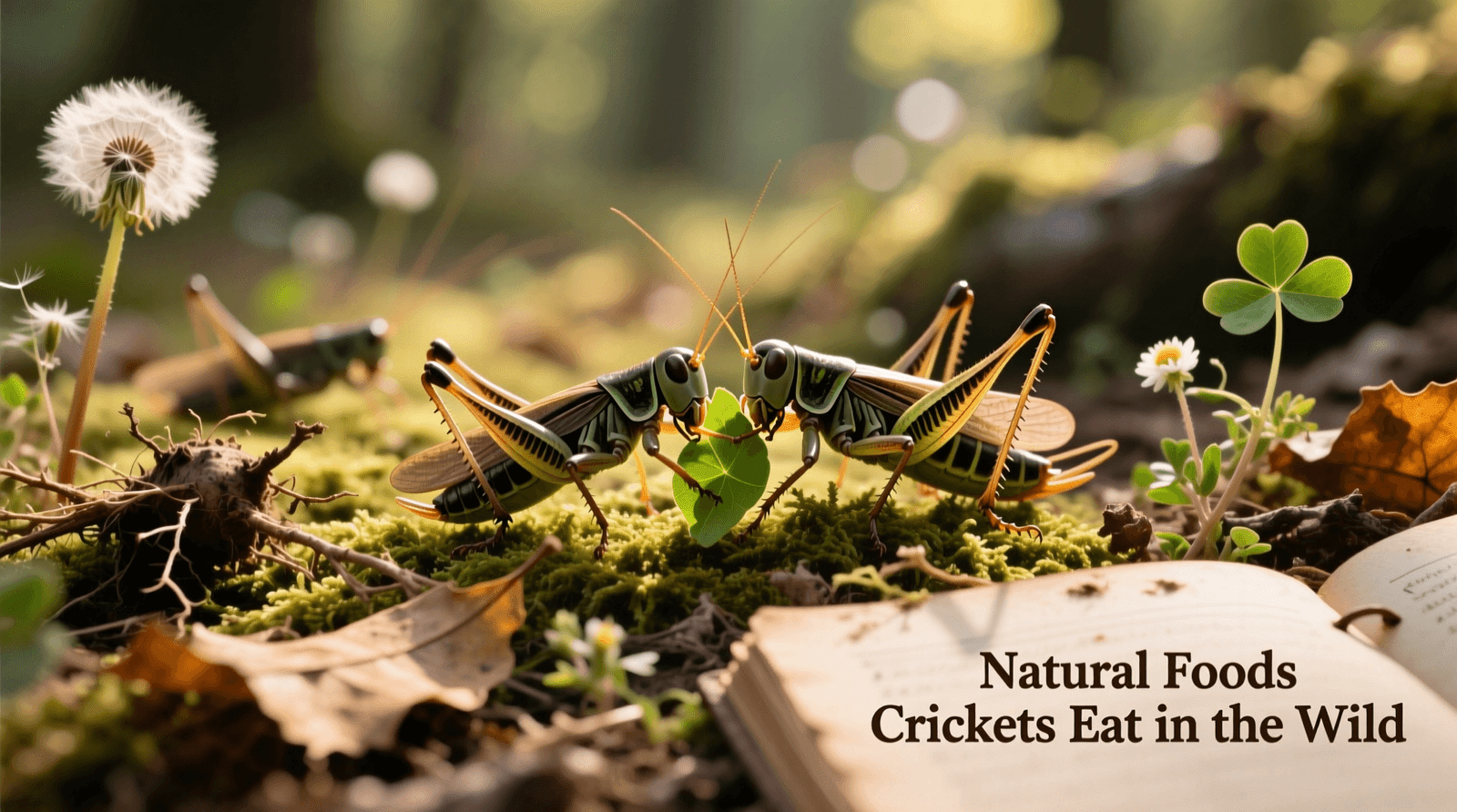
In the wild, crickets live off a diverse menu. They feed on decaying organic matter, dead plant matter, insect larvae, and fungi. This combination provides a full insect diet that keeps them active and healthy. Different species such as field crickets, true crickets, and cave crickets adapt their meals to local resources. This flexibility ensures a balanced cricket population balance and contributes to nutrient recycling in nature.
Here’s a simple table showing the main foods in a natural cricket diet:
| Food Type | Examples in Nature | Purpose |
|---|---|---|
| Plant Material | Grass, leaves, roots | Basic nutrition and energy |
| Fruits & Veggies | Berries, apples, vegetables | Natural sugar and vitamins |
| Small Insects | Ants, worms, larvae | Protein for growth |
| Organic Waste | Fungi, mold, dead matter | Survival food in scarcity |
Crickets are decomposer insects, which means they help with organic waste breakdown. Without them, rotting material would pile up faster. Their eating habits make them essential natural scavenger insects that support clean and balanced crickets and ecosystems.
How Crickets Hunt and Forage for Food
Crickets are not hunters like spiders, yet their survival depends on clever foraging. They use antennae to detect scents and vibrations while searching for foods crickets can eat. During warm nights, they move quietly through grass or soil looking for food scraps. Their foraging instincts make them vital pest control insects, keeping the environment in check.
Crickets display strong cricket feeding habits that vary with conditions. In warm, humid areas, they eat more fruits and plants. In dry conditions, they depend on small insects or decaying organic matter for moisture. This pattern shows how crickets in nature adjust their insect food chain behavior to survive harsh seasons.
Crickets as Omnivores: What It Really Means
Being omnivorous means flexibility. Crickets as omnivores thrive because they can eat nearly anything. Their diet includes seeds, greens, fungi, and even dead insects. This combination creates a complete cricket diet rich in vitamins and proteins. House crickets food options often mirror this variety since their wild cousins eat a wide range too.
Omnivorous insects like crickets benefit ecosystems by recycling nutrients. Their feeding ensures fewer waste materials and stronger soil quality. This omnivorous trait also keeps field crickets diet and spider crickets diet stable across regions. The more diverse the food for crickets, the more resilient their species becomes against food shortages or climate changes.
What Do Baby Crickets (Nymphs) Eat?
Baby crickets, or nymphs, have smaller appetites but need soft baby crickets food to grow fast. They mostly eat tender plants, bits of fruit, and soft grains. Their tiny jaws can’t handle hard materials yet, so they depend on easy-to-chew fruit and vegetable diet for crickets. This soft nutrition provides energy for their early molting stages and ensures strong adult development.
As they mature, nymphs start to consume cricket larvae and small organic scraps. A balanced diet supports cricket nutrition and keeps mortality low. In the wild, young crickets often survive on organic matter insects eat such as algae, fungi, and ground roots. These nutrient-rich meals accelerate their growth, helping maintain cricket population balance in natural environments.
Feeding Pet Crickets the Right Way
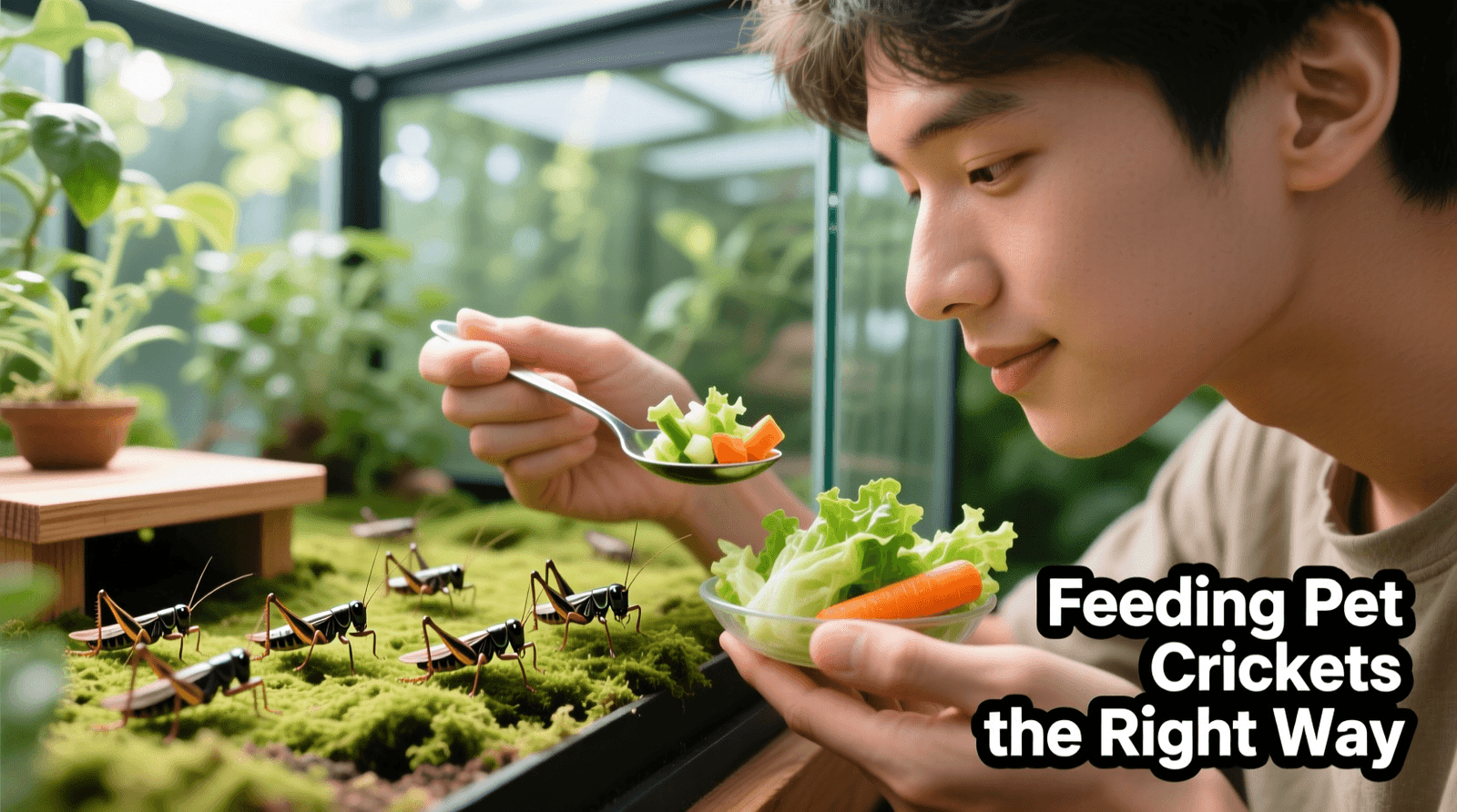
If you keep crickets at home, whether as pets or feeder insects, you need to know how to feed crickets properly. You can give them fruits, vegetables, and grains as part of their healthy food for crickets plan. Some people also use fish flakes or powdered oats for extra protein. Feeder crickets food is often fortified with vitamins for reptiles, making them nutritious and safe.
To boost their value as crickets for reptiles, many owners use the gut-loading process. This means feeding crickets nutrient-rich foods before offering them to pets. It ensures reptiles get all the essential nutrients through their meal. Keep water available too. You can provide hydration for crickets using a small dish filled with wet cotton to prevent drowning. Balanced moisture and humidity levels maintain active and long-living cricket colonies.
Foods You Should Avoid Feeding Crickets
Not every human or animal food suits crickets. You should avoid sugary snacks, processed food, and salty items. These damage cricket nutrition and lead to weak growth. Moldy or spoiled food can also cause infections in crickets, reducing their lifespan. Avoiding chemical-based fertilizers or pesticide-exposed food is also vital for safe cricket diet management.
Feeding the wrong food can affect their health and reproduction cycle. Unbalanced meals lower egg-laying rates and harm the cricket population balance. To keep crickets thriving, stick to natural foods such as grains, vegetables, and protein-rich sources. The cleaner the diet, the healthier and more efficient they become in their role as decomposer insects and pest control insects.
How Cricket Diet Affects Their Health and Lifespan
Nutrition directly shapes how long crickets live. A poor cricket diet leads to weak movement, low chirping activity, and early death. A balanced mix of carbs, protein, and minerals helps them stay strong. Proper meals ensure steady nutrient recycling, which also benefits their surroundings. Healthy crickets mean cleaner soil and better air quality in crickets and ecosystems.
Diet also influences reproduction. Crickets eating a strong mix of proteins and greens produce more eggs. For pet owners, consistent feeding habits mean fewer deaths and more active insects. Maintaining hydration for crickets and good humidity levels can extend their lifespan too. A complete cricket diet supports their role as recyclers and essential links in the insect food chain.
Crickets in the Ecosystem: Nature’s Clean-Up Crew
Crickets are nature’s unsung heroes. Their constant feeding keeps soil fertile and reduces rot. They help with organic waste breakdown and encourage nutrient recycling. Every bite of dead plant matter or decaying organic matter contributes to a cleaner planet. That’s why crickets are vital pest control insects and essential parts of the global ecosystem role.
In many ways, crickets act like tiny compost workers. They turn waste into nutrients, making them powerful decomposer insects. Their ability to eat anything, even organic matter insects eat, makes them key players in the environmental adaptation process. Without them, the natural balance of waste and growth would crumble, affecting many species in the insect food chain.
Final Thoughts on What Crickets Eat
Crickets are small but mighty contributors to nature’s design. Their natural cricket diet includes almost everything organic, from fruit peels to tiny bugs. They adapt quickly to different habitats and conditions, which makes them valuable omnivorous scavengers. Whether you raise them as feeder insects, observe them in your yard, or study crickets in nature, their diet offers endless insight into how life recycles itself.
Knowing what crickets eat for protein and how to provide foods crickets can eat helps both pet owners and eco-lovers. These insects remind us that every piece of waste has value when it returns to the soil. Crickets show that even the smallest creatures play a massive part in sustaining Earth’s beauty and balance.
My name is Mohd Ali, and I’m a digital marketer, content writer, creator, video editor, and blogger. Every day, I share information related to cricket and football on my blog. I reside in the city of Hyderabad, and I completed my graduation from EIILM University, Sikkim. I am the founder of newsblog4u.com.
